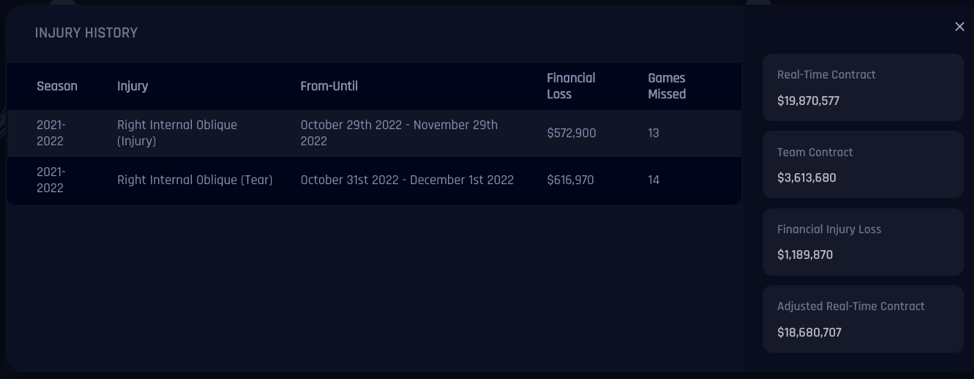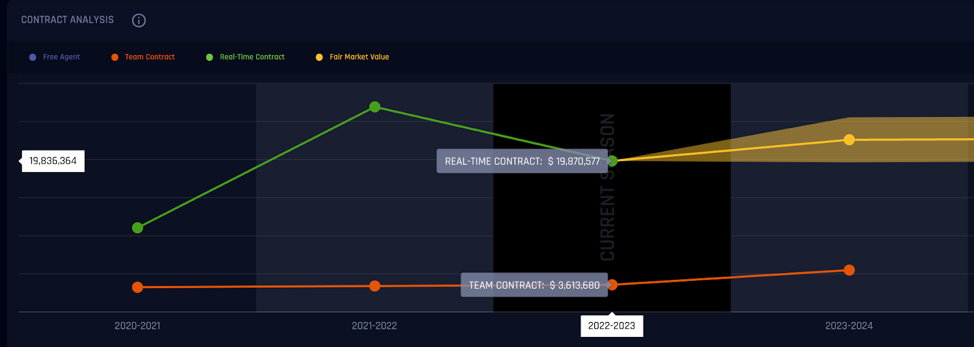NBA Star Spencer Dinwiddie & Entrepreneur Josh Ebrahim On The ProFitX App, Money Man, “Stranger Things” & More
ProFitX: The Impact of Injuries on High Performing Players
Nick Crain | 1/15/23
While injuries are a part of the game, it’s always been crucial for athletes to come back at the same level they were at prior to sustaining an injury.
Especially as athletes get older, conventional wisdom allows us to believe that it’s easier to maintain production with a skill set that features more shooting and precision, than raw athleticism and fast-twitch.
If an athlete breaks their foot, they’re usually able to go through shooting drills before they start dunking the ball again. If an athlete injures their shoulder, they’re able to participate in walkthroughs before they can actually get on a floor in live action and bully their way into the paint.
Injuries, however, can also impact a player’s financial value and dictate much of an athlete’s future. When signing someone to a deal, injury history and the potential for future injury, is always taken into account and a leading contributor as to how much and for how long an athlete is offered a contract for. And with most NBA contacts being fully guaranteed, meaning that athletes get paid whether they’re healthy and playing in games or not, injuries will always be one of the most important aspects of an athlete’s career and financial trajectory.
Let’s take a look at a few players around the league that have recently been injured and how that’s impacted them and their teams.
Cole Anthony
Anthony missed a month early in the season with an oblique injury, but had made a significant impact on winning since his return. Orlando was 5-17 when he returned on Nov. 30, but has gone 11-11 since.

Anthony has averaged 11.6 points, 4.5 rebounds and 4.2 assists per game off bench this season, proving to be a great scorer and facilitator with the second unit. Due to his ability to recover fully from the injury and perform at a high level, his current production value is worth just under $20 million and is projected to rise moving forward as he gets more healthy.

Robert Williams
It’s never a good sign when a big has knee issues, but there’s still optimism for Williams. Following a knee injury that required surgery, he’s been slowly working back into the Boston rotation over the past few weeks.

With an injury this significant, the Celtics have been pretty conservative with his time on the floor since the December return. Williams has played in just over 21 minutes per game in the 12 contests he’s appeared in this season. He’s also taken a few games off due to injury/load management.
Williams’ real-time value is down due to injury, but we project it to go back up as time goes on. He’s still very young and should recover well as the season progresses.

An elite rim protector and someone that plays mostly in the paint on offense, the lower half of Williams’ body is crucial for his performance. While he’ll continue to ramp up and produce more as the season goes on, he is currently averaging just 7.6 points and 7.8 rebounds per contest.

Anthony Davis
Davis is one of the more injury prone stars in the NBA, most recently suffering a foot fracture. Given how mobile athletes in the game of basketball have to be, constantly running and jumping, this is even more concerning.

In the 13 games leading up to the contest in which he got hurt, Davis was playing outstanding basketball as the Lakers started to hit a stride, averaging 32.4 points and 14.0 rebounds per game.

It’s never about production or value with Davis when he’s on the court. The issue has always been health and actually taking the floor. When he’s playing, he’s one of the best players in the entire NBA.
This is factored into our real-time value for Davis, as he’s absolutely worth the contract he’s on when he’s on the court, but that hasn’t been much of late.

Since the start of the 2020-21 season, Davis has played in just 101 games. He hasn’t notched a season with more than 40 games played since the 2019-20 campaign. He’s set to be 30 years old later this season, hoping to have better injury luck the rest of his career.
